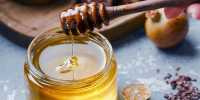You may have seen a few glossy headlines floating around kink-shy herbal crabs to be sexually attracted to marine plastics (probably more after a wee press office sniffer attached to a paper about horned shrimp), but the reality is drawn by a recent study The part is a bit different.
The UK-based study looked at the behavior of hermit crabs when exposed to oleamide concentrations, a contaminant that can escape plastic contamination, and found that hermit crabs were attracted to its scent and even tried on plastics, increasing their consumption of this unusual ingredient. Published in the Marine Pollution Bulletin, the study highlights how additive leaching can play an important role in drawing marine life towards plastics.
“The work is part of a research cluster dealing with the effects of stress on marine life and the use of odors/odors/odors as a medium of communication and the effects of climate change as well as toxic compounds (such as plastics) on this medium of communication, often referred to as the language of life,” Says Dr. Jorg D Hardege, author of IFL Science. The specific chemical in this new study was the plastic additive oleamide (9-octadenamide), which was found to increase their respiration rate even at low concentrations when exposed to Hermit crabs (Pagurus bernhardus).
Far from thinking about their genitals, the “hungry for plastic” crabs have been found to mimic the attraction shown when they come in contact with the feeding stimulant betaine. So, what about oleamide that makes these herbs so hungry? The chemical properties of oleamide are similar to those of arthropods and algae. Hermit crabs are sculptors, which means they are looking for beautiful dead things to feast on by combing the seabed. It would probably make sense to argue that they would be attracted to something that mimics the chemical cues of mature old lobsters for picking.
Researchers suggest that it may present a “scent trip” for herbal crabs, who are slaves to their food greed. The situation is different, however, when it comes to hermaphroditic shrimp Lysmata boggessi. In a separate study published in the journal Plus One Back in 2011, researchers tested the hypothesis that oleamides acted as a sexual indicator for shrimp because they shared features with pheromones found in female bodies that are also found in insects and event pandas.














